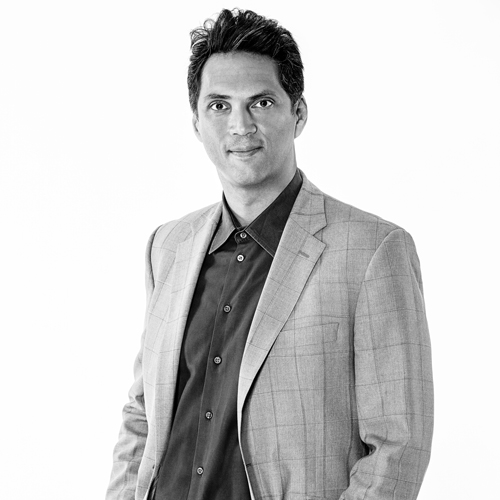When Honda Motors, Nissan, and Mazda Motor Corporation decided to expand their manufacturing footprint to Mexico, UGN also needed to develop its own facility south of the US border to serve those companies—its customers. UGN is a $400 million company that manufactures acoustic solutions, interior trim, underbody, and thermal management products in five North American facilities for Japanese OEM automobile manufacturers.
MANUFACTURE EXCELLENCE AT HOME AND ABROAD
The city of Silao is a central hub of agricultural and industrial activity with a wide variety of farm crops, produce, and dairy packing plants. It’s also the site of Cerro del Cubilete, which is considered the geographic center of Mexico.
On the highest part of the mountain (at 8,200 feet) stands a monument to Cristo Rey, or Christ the King. It represents the unity of the people of Mexico in the Catholic faith, and it took nearly four years to complete.
At its Silao location, UGN’s culture is built to inspire everyone toward excellence in their communities through service. The company strives to positively affect the lives of team members where they live and work.
Randy Khalaf embodies that spirit of excellence. Before his promotion to executive vice president of strategy, he was named “Chicago CFO of the Year” in 2014 by Financial Executives International, for making contributions with “quality, insight, and direction.”
UGN’s 60,000-square-foot Silao plant manufactures a variety of products that include: dash insulators, engine side parts, trunk systems, package tray assemblies, ultra-light products, wheelhouse liners, and underfloor modules.
Randy Khalaf, UGN’s chief operating officer and executive vice president of strategy, was responsible for identifying a suitable site and developing the company’s Mexican manufacturing operations from the ground up. “Being asked to be part of a new production venture, especially by a key customer like Mazda, was very exciting,” Khalaf says. “It was an opportunity for UGN to add to incremental production volume and to support the growing Mexican automobile-manufacturing footprint. It was an easy business case to make.”
UGN chose the city of Silao in central Mexico due to its proximity to current and future customer plants, available suppliers, workforce, and infrastructure. The 60,000-square-foot facility, which currently employs about 250 team members, opened in 2013.
Along with automotive-manufacturing growth in Mexico, the plant has been booming ever since. In addition to producing vehicle acoustic solutions for more than 200,000 Mazda 2s and 3s annually, UGN has added 200,000 Honda vehicles along with 70,000 vehicles for Nissan. Toyota also has plans for opening a Mexican manufacturing facility within the next three years. As a result, Khalaf expects a substantial plant expansion in the near future.
Implement Course Corrections
Although production has surpassed expectations, launching the plant was not without some initial stumbles.
To start, UGN’s manufacturing process is complex and requires a specific regimen, standardized processes, and equipment installed according to exacting specifications. The company quickly learned that instructions for its Mexican partners that handled equipment delivery and installation needed to be more transparent, highly documented, and clearly indicate critical milestones.
“We were trying to manage the process without taking cultural differences fully into account,” Khalaf says. “We had to develop much closer, more personal relationships with our in-country partners so they understood how critical all of the technical standards and timing were to our success.”
Khalaf also quickly realized that onboarding and training processes imported from the United States were not always effective for new team members. In addition to stressing the regimented production processes, methods had to be developed to prepare workers for the highly industrialized production environment. Many new hires come from subsistence-farming backgrounds where schedules and activities vary day to day, and many have never been around heavy machinery. Some never had electricity or running water on a regular basis. These circumstances resulted in production turnover rates of up to 25 percent per month for the first year of operation.
In response, Khalaf began hiring local trainers who now screen potential team members by explaining what the company does and clarifying what the work environment entails. Those who are still interested go on to complete a two-week orientation that details the products, manufacturing processes, safety, and quality expectations. It also includes a facility walk-through with current team members. “We had to go through our own learning curve, but tailoring hiring methods to the local setting and experiences changed everything,” Khalaf says. UGN’s monthly turnover rates have been reduced to an average of 3 percent.
From Zero to $40 Million
Within four years, the Silao facility has grown to $40 million in annual revenue. At least part of this success can be attributed to the combination of Khalaf’s financial and business acumen. Although he came up through the financial side of the industry, he considers himself to be a business executive who happens to have financial expertise along with a passion for manufacturing.
He attributes this to his former mentor at GKN Driveline, John Giannangeli, who retired as the company’s Americas CFO. “He showed how critical it is to integrate yourself with the business as a financial professional and resource,” Khalaf explains. “If you fully understand what they do and provide practical metrics that help them make more informed decisions, the financials will take care of themselves.”
This means presenting information that tells a meaningful story in terms of business efficiencies and metrics, such as the sources of scrap in the manufacturing process. Compared to spreadsheets and intangible calculations, Khalaf finds that focusing on such nonfinancial drivers is more effective at illustrating key concepts and motivating team members.
Khalaf pushes his finance team to follow this practice as well. He encourages them to demonstrate their value by providing practical, actionable data that improves real-time performance. “Being isolated in the back room is the kiss of death,” Khalaf says. “But integrating with the business, providing expertise, and proving that we’re all working together to make the best decisions empowers the whole team.”
To support this approach, he introduced innovative financial methods such as determining true margins of potential new products. “Comparing what we gain by producing against what we lose if we don’t has completely changed how we go about quoting and acquiring business,” Khalaf says. He also has developed business intelligence dashboards that provide managers with at-a-glance daily targets and real-time current status. These have contributed to successfully hitting annual production targets for the past eight years.
On the Road Ahead
Moving forward, UGN is faced with the ongoing challenge of keeping up with continued growth of the North American automotive market in a capital-intensive business that requires uninterrupted quality supply to meet customer demand. There is also constant pressure for continuous improvement in all areas of production and an expectation that resulting cost savings will be passed on to customers.
Khalaf’s personal goal is to find new ways to communicate in the most meaningful ways possible with team members at all levels in every functional area. “Everyone has their individual perspective and ownership of the drivers that make us more focused and more successful,” Khalaf says. “My job is to effectively provide the common strategic vision to ensure we maximize shareholder value.”

